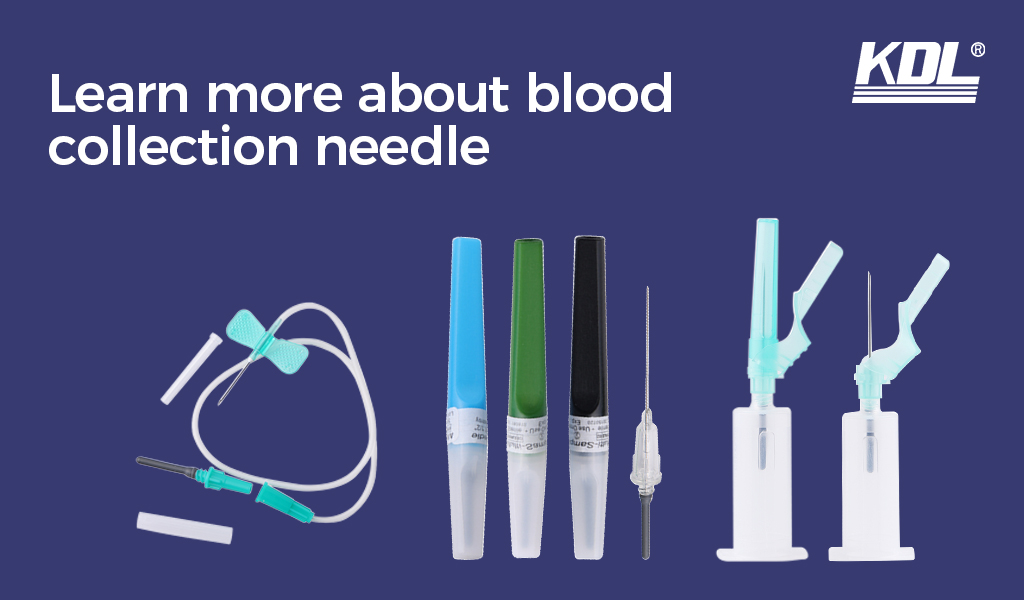Blood collection needle

A blood collection needle is a medical device used to collect blood samples from a patient for various diagnostic tests. It typically consists of a hollow needle, which is inserted into a vein, and a collection system, such as a vacuum-sealed test tube or syringe, to store the collected blood sample. Blood collection needles come in different sizes, and the choice of needle size depends on factors such as the patient’s age, vein location, and the required sample volume. Although the process of collecting blood samples is generally considered safe, it is important to take necessary precautions to ensure the patient’s comfort and minimize the risk of complications like infection.
Blood collection needle come in different sizes, designed to accommodate the patient’s comfort and the specific requirements of the blood collection process. The size of a blood collection needle is determined by two factors: the gauge and the length. The gauge refers to the diameter of the needle, and it ranges from smaller numbers (larger diameter) to larger numbers (smaller diameter). The length of the needle is typically measured in inches.

Safety blood collection needle
Safety blood collection needles are designed to minimize the risk of needlestick injuries and cross-infection during the blood collection process. These needles feature safety mechanisms that either retract or shield the needle tip after the blood sample has been collected. The safety mechanism is typically activated by the phlebotomist, either manually or automatically, right after the blood draw is completed.
Safety blood collection needles come in various sizes, just like standard blood collection needles, ranging from small-diameter needles for patients with delicate veins to larger-diameter needles for routine blood work. Examples of safety blood collection needles include retractable needles, wherein the needle

Blood Collection Needle-Pen Type
A blood collection needle pen type, also known as a lancet device, is a pen-like medical instrument that is commonly used for collecting blood samples, typically from the fingertip, for diagnostic purposes. These devices are commonly used by patients and healthcare professionals for monitoring blood glucose levels in diabetics or for collecting small blood samples for other tests, such as cholesterol or blood coagulation tests.
The pen-like design makes it simple to use and convenient for self-monitoring at home. It houses a lancet, which is a small, sharp needle used to puncture the skin and draw a small amount of blood. The depth of penetration of the lancet can typically be adjusted to accommodate the patient’s comfort and the required sample size.
To use a blood collection needle pen type, the healthcare professional or patient simply places the device against the fingertip, presses the plunger or release button, and the lancet swiftly punctures the skin, causing minimal pain and discomfort. The blood sample can then be collected on a test strip or other collection device for analysis.

Common blood collection needle sizes
– 21-gauge needle: This needle size is often used for drawing blood from adults with average-sized veins. It is suitable for most routine blood work.
– 23-gauge needle: These needles are smaller in diameter than 21-gauge needles and are used for patients with smaller or fragile veins, such as elderly patients or children.
– 25-gauge needle: This smaller needle size is used for delicate veins or in pediatrics, where a gentle touch is required.
The choice of needle size depends on the patient’s age, vein condition, and the required volume of the blood sample. Medical professionals must consider the specifics of each situation to select the appropriate needle size for efficient and comfortable blood collection.
Conclusion
These were some of the most common types of blood collection needle used by medical professionals for various purposes. It is important to note that the choice of blood collection needle depends on the patient’s requirements. It is also very important that blood collection needle should only be used by trained medical professionals who can handle blood collection needle and know how to use them well. You’ll find KDL needles and syringe to be your best choice for all of your needs. Connect with KDL if you wish to know more about us.
 +86-791-8686-1216
+86-791-8686-1216 

